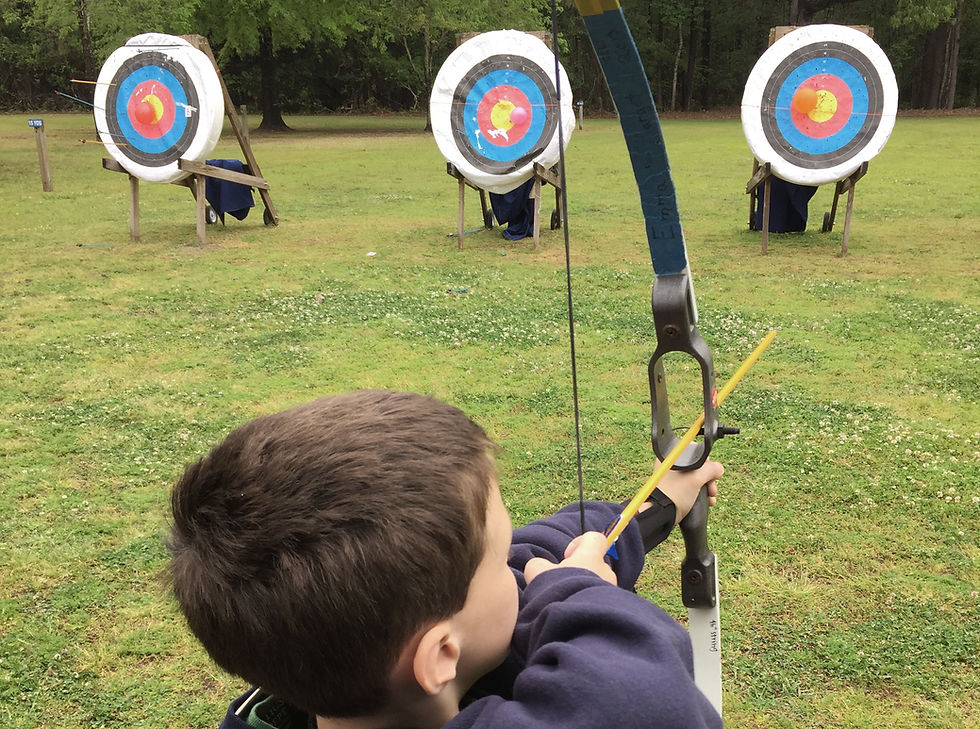3 "TOP" Tips to Study Math (2nd Part) - Objectives
- Just Somebody
- Jun 5, 2021
- 5 min read

If you haven't read about the first TOP tips, Tools (Change tools to the link)
, please go ahead and read it first because I think the order matters. Second TOP tips is Objectives! It is essential to identify the objectives or ultimately knowing what you need to achieve. Without knowing your objective or target, it doesn't matter how sharp is your arrowhead or how great is your bow, the ONLY way to hit your target is by chance.

Same goes to learning or solving math. In every question, there must be a final objective like find this or solve that. Even harder or advanced level questions have it too though sometimes they are hidden or concealed in some ways which is hard to decipher.
Hereby I would like to introduce two Directional Thinking Process to help you to find the objectives and hopefully solve any questions. Both of them would require some combination of the knowledge from the first TOP tips, Tools. They each have their pros and cons and should be used depending on the circumstances.
1) Forward Thinking: Forward from the start to the goal

This is the thinking process which we will start from what we have or know, then by choosing the appropriate methods to eventually make our way to the end.
Follow through this process could be exhausting as we have numerous tools or formulas to choose from. On top of that, while we’re making our way to the objective and got strayed away, we would need to make corresponding adjustments to steer it back to the right direction. Worst case scenario when we’re too far gone, we would need to abandon ship and start again probably with other tools or methods.
After getting your expectations set and what you would need to do to reach your end goal, I would want to emphasize that these statements mentioned above should not be the excuses for not trying. They are actually what you need to keep in mind so you have at least some guidance whenever in doubt or troubleshooting.
This thinking process is actually most useful for entry level and even for advanced level questions. By applying the available formulas for entry level questions, you will easily see your objectives really soon, and often times, you already reach your final destination by then. Whereas for advanced level questions, sometimes this is the only way to solve your problems. With the given limited information, most probably you have to make do with what you have and slowly deduce your way down by trial and error. Slowly solving small and subsequent objectives will surely lead you to the biggest and final one.
2) Backward Thinking: Reverse from the goal to the start

Sometimes we could advance by moving backwards. The rationale behind this is when you know what you are looking for and with the end in mind, it is relatively easier to choose the logical and optimal solutions. However, the only downside is when the final objective of the questions is ambiguous or not clear.
I highly recommend everyone to try this thinking method out as most of the times, people would just use forward thinking, and probably give up too early due to the exhaustive process or even too afraid to get started. Sometimes, it could be fun to have different or broader perspectives.
To summarized, mostly we would need to consider both directions to evaluate which path to take, and sometimes combining the two and make the connection for a smooth flow from current stage to the end goal. We would discuss more how to accelerate the overall thinking process at the last TOP tips. And again, I would like to emphasize do not restrict yourself to apply those tips mentioned above only on math learning or practicing, these are literally just methods of logical thinking and should be applied to wherever you see fit.
Anyhow, choose your direction and have fun thinking!!

如果你还没阅读第一个TOP贴士,工具 (Change to link)
,请先去阅读,因为我认为排序很重要。第二个TOP技巧是Objectives 目标!确定意图或了解最终你需要实现的目标至关重要。在不知道目标的情况下,不论箭头多尖锐或弓有多强韧都无济于事,唯一能考运气去击中目标。

学习数学或解题也是如此。在每个问题中,都一定会有一个最终目标,比如求解这个或者分解那个。即使更难或更高级的问题也是同样的,只是它们有时会隐藏起来或以某种形式潜在题目之下而已。
在此,我想介绍两个方向性思维方式,以帮助你找到目标并希望解决任何问题。两者都需要一些第一TOP贴士,工具,中的知识来做组合。它们各有优缺点,应根据具体情况使用。
1) 定向性思:从起点向前到目的地

这是一个将从我们拥有或知道的东西开始,然后通过选择适当的方法最终走向终点的思维过程。
由于我们有许多可供选择的工具或公式,因此走完整个过程可能会很累。最重要的是,当我们朝目标前进时迷了路,我们需要进行相应的调整,将其带回到正确的方向。最糟糕的情况是,我们走得太远了,我们必须放弃这个解法,然后使用其他工具或方法重新开始。
在管理好你的期望以及让你知道达到最终目标所需要做的事情之后,我要强调的是,上述陈述的一切不应该成为不尝试的借口。实际上,它们是你需要牢记的,因此,无论何时有疑问或疑难解答不了,你至少还有一些指引。
对于入门级甚至高级问题,这种思考方式实际上都是非常有用的。对于入门级的问题来说,通过应用可用的公式,你很快就会很容易地看到自己的目标,而且通常很多时候,你已经抵达了最终的目标。对于高级些的问题,有时这是解决问题的唯一思维。在信息有限的情况下,你很可能必须对已有的信息进行处理,然后通过反复试验逐步推论出自己的方法。缓慢地解决较小的目标和后续肯定会引导你达到最大以及最后的目标。
2) 逆向思考:从目的地倒退到起点

有时我们可以通过逆向移动来前进。这样做的基本原理是,当你知道要最终要抵达的终点在哪里时,相对来说会比较容易选择逻辑上最佳的解决方案。但是,唯一的缺点是问题的最终目标不明确或不清楚。
我强烈建议大家多尝试这种思维方法,人们通常只会使用定向思维,并且由于过程详尽可能放弃得太早,甚至有可能害怕开始。有时,拥有不同或更广阔的视野可能会很有趣。
总而言之,大多数的情况下,我们需要考虑两个思维方向来评估所该采取的路径,有时将两者结合起来并建立桥梁的关系,以实现从现在的阶段到达最终目标的一个顺畅流程。我们将在最后的TOP贴士中讨论更多有关如何加快整体思维的过程。再一次,我想强调的是,不要限制自己仅将上述技巧应用于学习数学或解题而已,这些实际上只是逻辑思维的方法罢了,应该应用于任何你认为合适的地方。
退步原来是向前。无论如何,选择你的方向,并享受有趣的思维吧!!



Comments